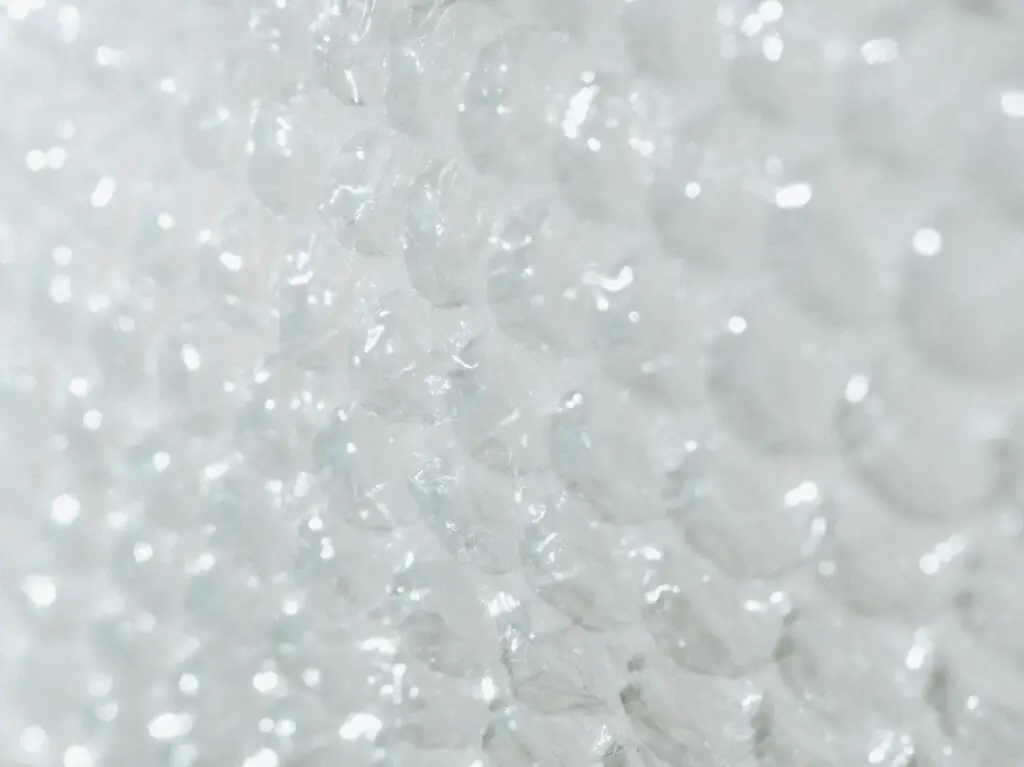A solar pool cover is designed to retain heat in a swimming pool by capturing and utilizing solar energy.
It helps maintain a comfortable water temperature, reduces evaporation, and conserves energy.
Made from UV-resistant materials, solar pool covers can efficiently extend the swimming season and save on heating costs.
Bubble wrap can be an innovative and cost-effective solution for a solar pool cover.
When used as a solar pool cover, the transparent bubble wrap allows sunlight to penetrate the bubbles and heat the water while the insulating air pockets retain this heat.
While not as durable or efficient as traditional solar pool covers, bubble wrap can be utilized temporarily as a Solar Pool cover.
Solar Pool Cover And Its Features
A solar pool cover, or solar blanket, is an essential accessory for pool owners who want to extend their swimming season, reduce maintenance costs, and increase energy efficiency.
Heat Retention And Solar Heating
Solar pool covers are designed to capture and retain solar energy.
The cover’s transparent or translucent material allows sunlight to pass through, heating the water beneath.
The trapped air bubbles within the cover create an insulating effect, helping to retain this warmth, especially during cooler nights.
This can extend the swimming season and make the pool more comfortable without relying on expensive heating systems.
Evaporation Reduction
Water evaporation is a significant concern for pool owners, leading to water loss and chemical imbalance.
Solar pool cover acts as a barrier to water evaporation, reducing water consumption and maintaining the chemical balance in the pool.
This can lead to substantial savings on water and chemicals over time.
Debris Prevention
By covering the pool’s surface, solar pool covers prevent leaves, insects, and other debris from entering the water.
This keeps the pool clean and reduces the strain on filtration systems, and minimizes cleaning efforts.
Energy And Cost Savings
Solar pool covers provide a cost-effective way to heat the pool without relying on traditional heating methods, leading to significant energy savings.
By maintaining the pool’s temperature, it minimizes the need for electrical or gas heating, reducing utility bills.
UV And Weather Resistance
Most solar pool covers are constructed with UV-resistant materials that can withstand prolonged exposure to sunlight, weather variations, and pool chemicals.
This ensures durability and longevity, providing value for many seasons.
Environmental And Safety Considerations
By reducing the need for chemical rebalancing and cutting down energy consumption, solar pool covers contribute to environmentally friendly pool management.
While not designed as a safety tool, some covers may deter accidental entry by small animals or children under supervised conditions.
Potential Consequences Of Using Bubble Wrap As A Solar Pool Cover
Durability Issues
Bubble wrap is not designed for outdoor use, especially in a pool environment.
It can break down quickly under the sun’s UV rays, leading to disintegration and potential littering of small plastic pieces in the pool.
Chemical Reactions
Bubble wrap may react with pool chemicals like chlorine, leading to the degradation of the material or even potentially releasing harmful substances into the pool water.
Maintenance Challenges
Handling bubble wrap on a pool’s surface can be cumbersome and time-consuming.
It may not roll or fold as neatly as a traditional solar cover, leading to difficulties in daily usage.
Aesthetic Concerns
Bubble wrap is unlikely to be as visually appealing as a solar pool cover designed for the purpose.
It may detract from the overall appearance of the pool and surrounding area.
Lack Of Debris Control
While bubble wrap might prevent some debris from entering the pool, it may not provide a firm or tight enough barrier.
This could lead to more frequent cleaning requirements.
Environmental Impact
Regular bubble wrap is typically made from plastic not designed for extended outdoor use.
Its rapid degradation may lead to environmental concerns, especially if small plastic particles enter the water system.
Can Bubble Wrap Be Used Effectively As A Solar Pool Cover?
Yes, but with limitations, bubble wrap can be used as a temporary solar pool cover.
Its air pockets can trap solar heat, warming the pool to some extent, and provide a barrier against evaporation.
However, it’s not as efficient or durable as a proper solar pool cover, and it may degrade quickly, especially under strong sunlight.
Will Bubble Wrap Protect My Pool From Debris?
Bubble wrap may provide some protection against debris like leaves and insects, but it’s not designed for this purpose.
Gaps between the bubbles and the pool’s edge may allow debris to enter, and it may not provide a firm or tight enough barrier.
Is Bubble Wrap Environmentally Friendly As A Pool Cover?
While bubble wrap might seem like a recyclable option, using it as a pool cover may have environmental concerns.
Exposure to sunlight and pool chemicals can cause it to break down, potentially releasing small plastic particles into the water system, which can harm the environment.
How Does The Cost Of Bubble Wrap Compare To Regular Solar Pool Covers?
Bubble wrap might appear to be a cost-saving option initially, but its lack of durability means it may need frequent replacement.
Proper solar pool covers are designed for prolonged outdoor use, providing better value over time.
These longer-term considerations may offset the initial savings with bubble wrap.
Can Bubble Wrap React With Pool Chemicals?
Bubble wrap is generally made from plastic that may react with certain pool chemicals like chlorine.
This reaction could lead to the degradation of the material or potentially release harmful substances into the pool water.
It’s not designed to withstand chemical exposure in a pool environment.
Is Bubble Wrap Safe As A Pool Cover?
While bubble wrap can be used as a temporary or experimental pool cover, there may be safety issues.
It can become slippery when wet, posing a risk, and if it breaks down, small plastic pieces might present a choking hazard for small children or pets.
Its use as a pool cover should be approached with caution and awareness of these potential risks.








